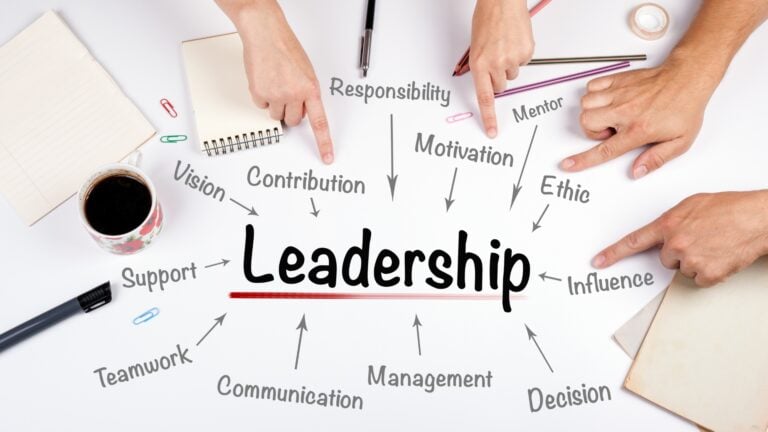We’ve been sold a myth.
That leadership means standing alone at the top. That to lead is to rise above. That influence is a ladder, and success is measured by how many people report to you.
But what if the real work of leadership doesn’t happen from the top down — but from the center out?
What if leadership, especially in times of collapse, conflict, and collective trauma, is less about commanding and more about connecting?
The Pyramid Was Built for Empire
The pyramid model of leadership is everywhere: CEO at the top, middle managers in the middle, “workers” at the bottom.
It’s in our governments, our schools, our nonprofits — even in our families.
But the pyramid wasn’t designed to serve people. It was designed to maintain control.
It rewards charisma over humility. Visibility over impact. Hierarchy over humanity.
And let’s be honest: it’s not working. Especially not in the Middle East, where youth are rising, movements are shifting, and new forms of power are emerging — quieter, deeper, more communal.
Solo Leadership Isn’t Just Lonely — It’s Fragile
When one person holds all the knowledge, the voice, the decisions, the vision — that’s not power. That’s risk.
Movements fall apart when their leader disappears. Companies collapse under charismatic CEOs. Projects stall because the “leader” burned out and no one else was allowed to step in.
This is a structural flaw, not a personal one.
We’ve made leadership so synonymous with visibility that people forget how to lead together.
Especially women. Especially in the Global South.
Circles Create Power That Pyramids Can’t
In many Indigenous, feminist, and decolonial traditions, leadership is not a throne — it’s a circle. Everyone has a place. The shape protects the space.
No one is above. No one is beneath.
In these spaces, leadership becomes relational, not positional.
It’s about rotating roles. Deep listening. Collective visioning. Holding power together — not hoarding it.
And it works.
Some of the most effective grassroots movements in Syria, Lebanon, Palestine, Sudan, and beyond are run by women, youth, and activists who lead in circles — not pyramids.
They take turns facilitating. They check in on each other’s mental health. They center care, not control.
This isn’t chaos. It’s coherence built through trust.
My Experience: Leadership That Holds, Not Crushes
I’ve led trainings where the “leader” didn’t speak the whole session — they simply created the conditions for others to grow.
I’ve sat in circles where the youngest participant shaped the final decision.
I’ve seen women run households, projects, and peace negotiations — all while being told they were “just helpers.”
And I’ve felt it myself: the exhaustion of being “the face,” the pressure to always be right, the loneliness of being placed on a pedestal you never asked for.
I learned the hard way that real leadership is less about being followed — and more about not walking alone.
So Why Do We Still Glorify the Solo Leader?
Because it’s easier to market.
Solo leaders fit into TED Talks and LinkedIn headlines. They give media a single point of focus. They offer funders and donors a “visionary” to bet on.
But social change doesn’t need stars. It needs systems.
And systems aren’t glamorous. They’re hard. They’re slow. They require humility, accountability, and patience.
But they last.

What Would It Look Like to Lead in Circles?
It starts with asking better questions:
-
What if power was something we shared, not something we earned?
-
What if leadership meant stepping back, not just stepping up?
-
What if “success” was measured in how many people rise with us — not just how far we rise alone?
To lead in a circle is to create room — not take space.
It means co-facilitation instead of hierarchy.
It means decision-making through consensus, not authority.
It means honoring knowledge that comes from lived experience — not just credentials.
For Arab Women, This Is Already Happening
Across the MENA region, women are reclaiming leadership on their own terms — not by mimicking corporate power, but by redefining it.
They’re creating community kitchens that double as organizing hubs.
They’re holding healing circles that become political incubators.
They’re designing training spaces where success means transformation, not perfection.
These models aren’t less powerful. They’re more resilient — because they don’t rely on one voice, one face, or one hero.
Leadership Is Not a Spotlight — It’s a Structure
And we must build it like one.
This means:
-
Training people to share power, not just hold it
-
Valuing emotional intelligence as much as technical skill
-
Centering collective care as a leadership competency
-
Moving beyond hierarchy as the default model
We need more leaders who can say, “I don’t know.”
Who can pass the mic.
Who can make space for silence.
Who can stay in the circle — even when it’s uncomfortable.
Final Thought: The Circle Is Our Future
In a region where pyramids have symbolized power for thousands of years, it’s time we looked to a different shape.
The circle doesn’t erase leadership — it redistributes it.
It honors the collective. It protects the vulnerable. It adapts to change.
And maybe, most importantly, it reminds us:
We were never meant to do this alone.




